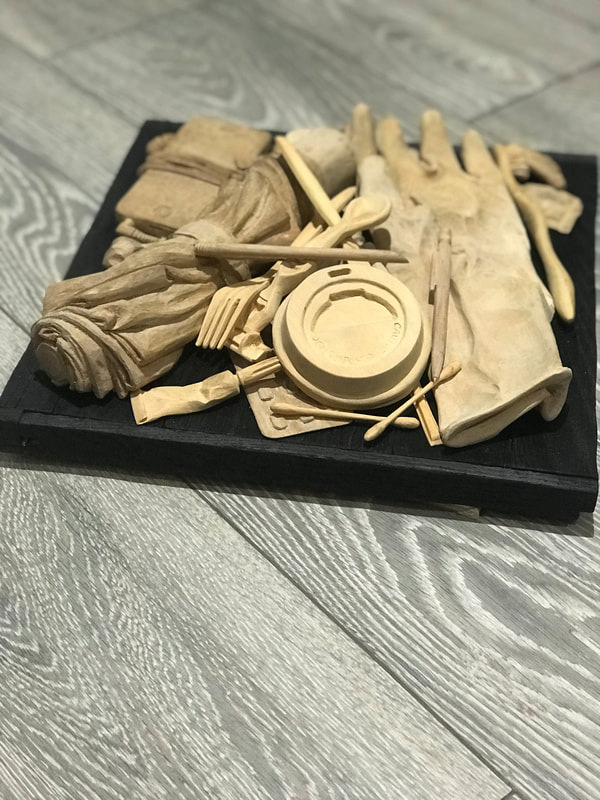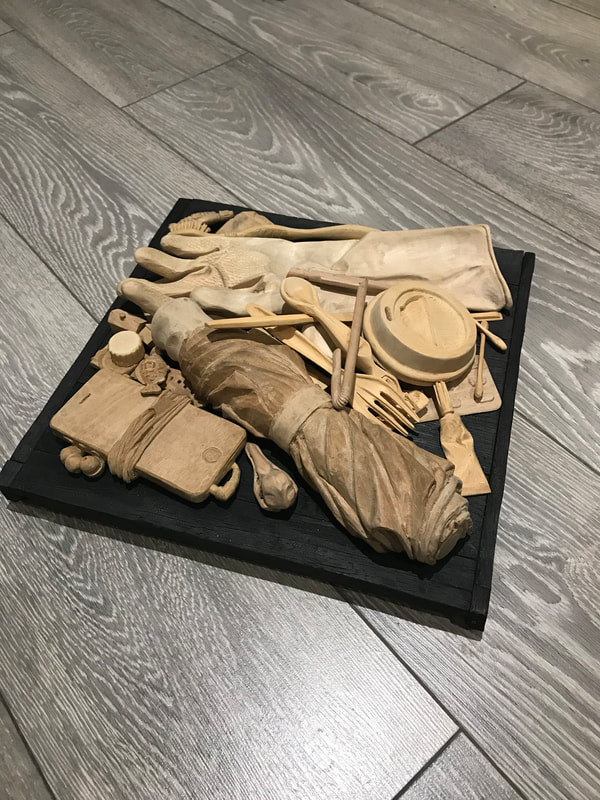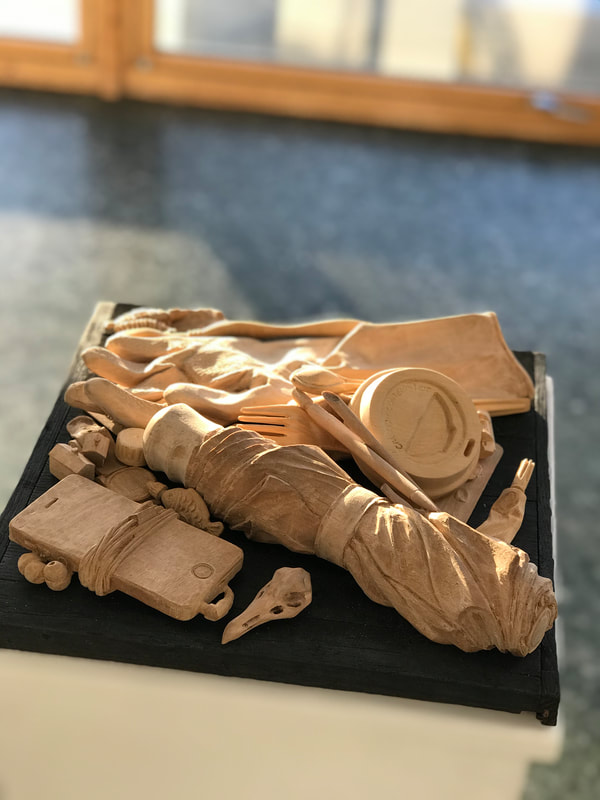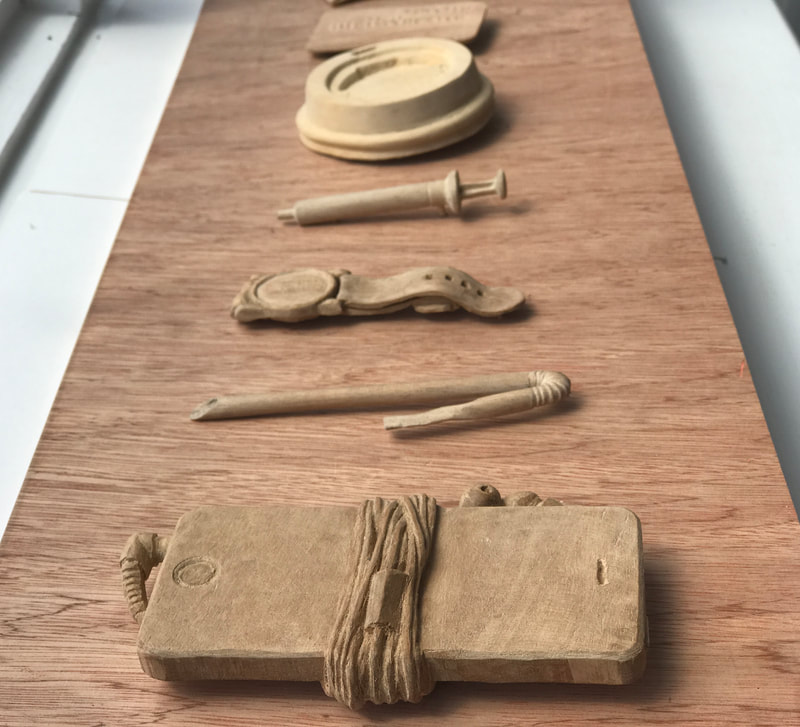Vanitas in the Anthropocene
Hand Carved White Beech Timber, Huon Pine
Dimension Variable, 2018-2020
Dimension Variable, 2018-2020
'Vanitas in the Anthropocene' are a series of contemporary still life wall hangings. Traditional Still-Life or Vanitas paintings were symbolic artworks, which both acknowledged the transience of life and the inevitability of death. ‘Vanitas in the Anthropocene III' is composed primarily of objects which are either disposable or have a planned obsolescence, many of which are the modern equivalent to objects used in the traditional form.
Unlike Vanitas paintings which have an inherently religious imperative, focusing on the salvation of the viewer’s soul, this work asks the viewer to reflect upon the ecological morality of consumption. The seagull is one of the animals which has become ubiquitous with urban life is presented here as a memento mori.
Each object is hand carved, a slow imperfect process in contrast to the quick-paced, mass production of their original counterparts.
I have used three types of timber in this project, White Beech and Huon Pine, both of which are native Australian timbers, which have been logged to the point of endangerment and in the case of Huon Pine, it can only be sourced through salvage.New protection measures have limited the use of both these timbers. The third, Lime, is a timber which has deep roots in European carving traditions.
Unlike Vanitas paintings which have an inherently religious imperative, focusing on the salvation of the viewer’s soul, this work asks the viewer to reflect upon the ecological morality of consumption. The seagull is one of the animals which has become ubiquitous with urban life is presented here as a memento mori.
Each object is hand carved, a slow imperfect process in contrast to the quick-paced, mass production of their original counterparts.
I have used three types of timber in this project, White Beech and Huon Pine, both of which are native Australian timbers, which have been logged to the point of endangerment and in the case of Huon Pine, it can only be sourced through salvage.New protection measures have limited the use of both these timbers. The third, Lime, is a timber which has deep roots in European carving traditions.







